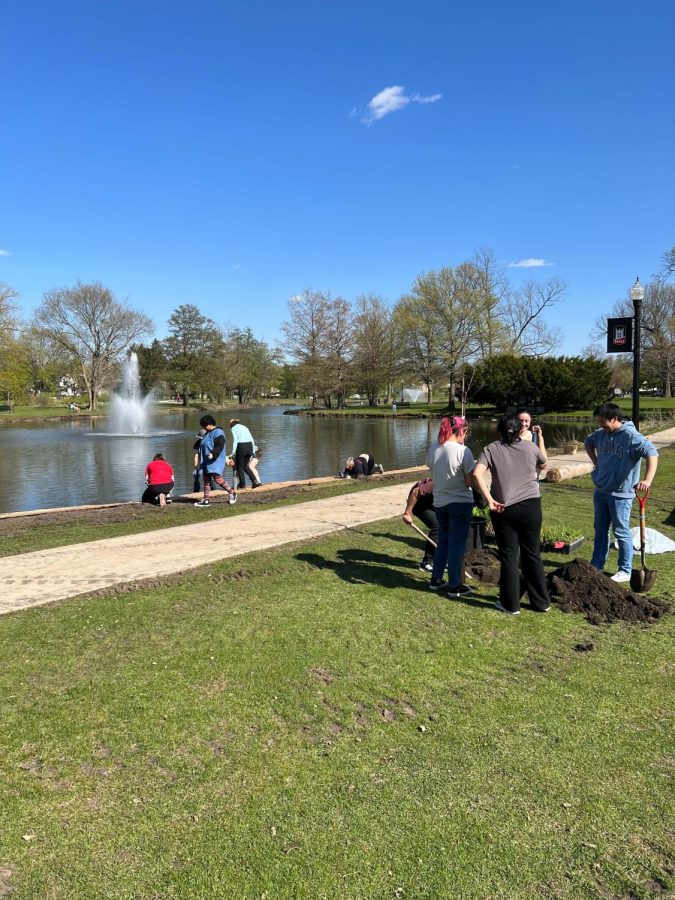Student project leads to East Lagoon restoration
Students plant native flowers and grass around the East Lagoon. The East Lagoon has recently been deteriorating around the shoreline. (Kaitlyn Lee-Gordon | Northern Star)
May 7, 2023
DeKALB – A group of classmates were determined to bring a school project to fruition by restoring the East Lagoon.
The student-led project of saving the East Lagoon from deterioration began on May 4.
The lagoon has experienced extreme erosion around the shoreline and is reported to be polluted with nutrient runoff after water quality testing.
Killian Becker, a senior environmental science major, said the project was originally a class assignment with their group members.
The restoration team received funding from the College of Liberal Arts and Sciences to help revive the East Lagoon. ENCAP, an ecological contracting organization, has also provided assistance to the student-led project by leveling the shoreline of the lagoon.
“I don’t really know what to call us. We’re a group of rag-tags,” Becker said. “It started as a project we were doing for a class last semester, and then they (CLAS) offered to have us do it in real life and we said yes.”
Around 20 volunteers helped by planting wildflowers and various native grasses to attract pollinator insects that would assist in maintaining the restoration team’s progress. Members of the restoration team planted two oak trees as well to welcome more birds to the shore.
Grace Glenn, a junior environmental studies major, said that recruiting other volunteers took a team effort.
“Each of us took fliers to our respective classes and tried to recruit people that way,” Glenn said. “I know that we have some family members here, some friends, and we also put up some posters around campus.”
Courtney Gallaher, NIU’s sustainability coordinator, said that she hopes the project will reintroduce beauty back to the lagoon.
“Over time, the goal is to put in these native restoration projects that will help to stabilize the shoreline, provide habitat for pollinator insects and animals to kind of beautify the space,” Gallaher said.
The restoration project is predicted to operate over a course of several years, according to Gallaher.
In the future, the team expects to expand the project by dredging the East Lagoon and making changes to its flooding capacity.



